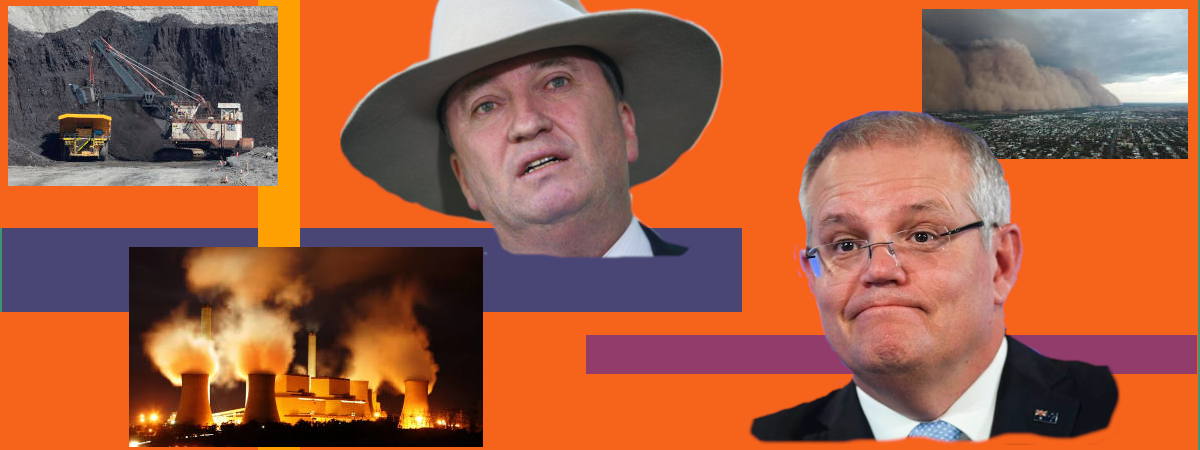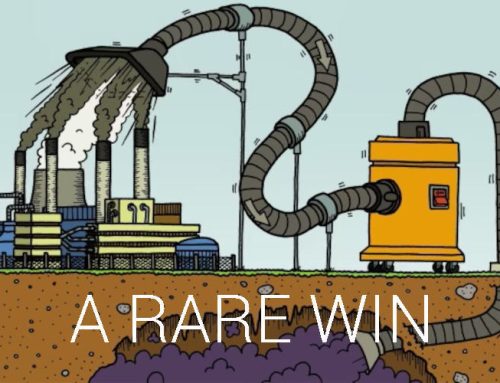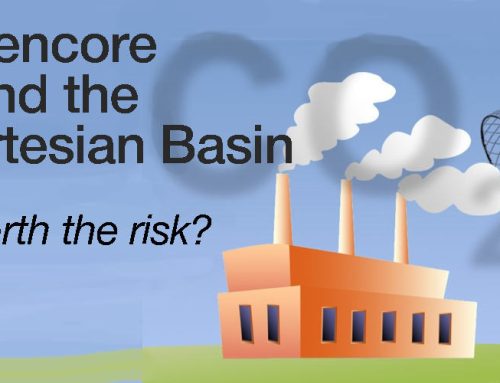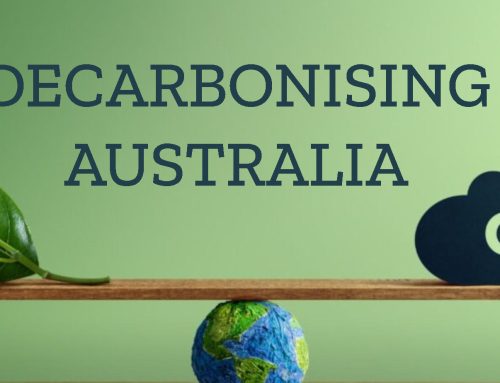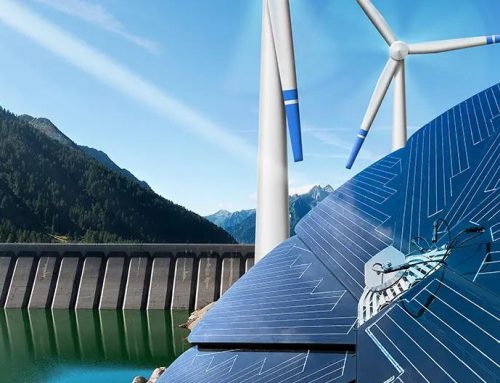Author: Robert Watson
rocky@rockflat.com.au
Keywords: Liberal-National inactivity, renewable energy, CO2, climate skeptic minister
1.5C … GOING, GOING, GONE! | 22 April 2022
1.5oC – Going, Going … GONE!
The Paris Agreement is a landmark international accord that was adopted by nearly every nation in 2015 to address climate change and its negative impacts. The agreement aims to substantially reduce global greenhouse gas emissions in an effort to limit the global temperature increase in this century to 2◦C above preindustrial levels, while pursuing the means to limit the increase to 1.5 ◦C. Source: IPCC (Intergovernmental Panel on Climate Change)
[To read more on the likely predicted effects of a temperature increase of 1.5 ◦C … CLICK HERE]
On current evidence, one could reasonably believe that Earth has possibly reached, or is very close to reaching the critical +1.5◦C temperature increase over pre-industrial temperature levels. Aside from scientific data illustrating this, reasonable casual observations should be enough to set off the alarms. Record temperatures and catastrophic weather events leading to extremely intense floods and bushfires all around the world have made most people aware that the climate is changing at a rapid rate. Albeit, whether or not we have reached or passed the 1.5◦C target is not nearly as critical as the need for every country to recognise the problem and take urgent action to ensure that emissions producing activities are stopped as soon as possible.
Australia has been a participant in all COP (Conference of Parties under the United Nations Framework Convention on Climate Change – UNFCCC) since inception. However, just turning up and paying lip service at conferences is not enough, and Australia’s conservative, fossil-fuel obsessed conference delegates and decision makers have been exposed. The Morrison government has proposed a zero emissions target by 2050. What are they thinking of? It’s a pie in the sky idea that was met with almost universal derision from around the world. In his usual conniving and immodest way Morrison says that we will reach zero emissions long before that, however, he has not even hinted at legislation to ensure that. Why would Australians believe someone who has built a political career on lies, deception, and pretence?
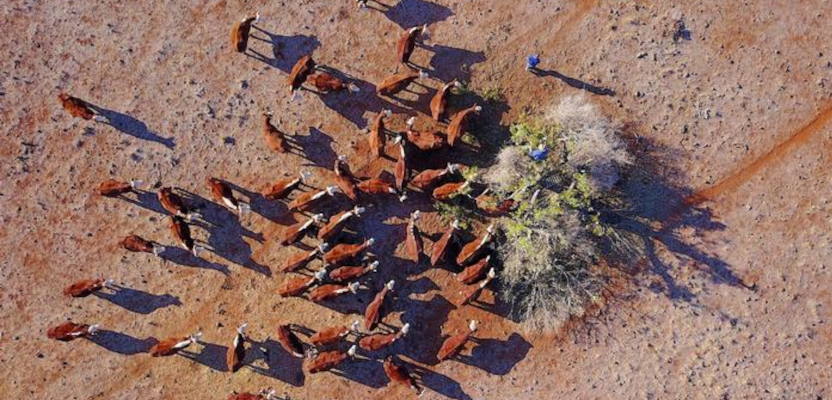
Let’s have a look at some of the critical people in Morrisons government – those making decisions on Australia’s future climate path. At the top there’s Morrison, a man very good at marketing. Yes, he’s a good salesman – he is also a liar. Whether or not he understands or even cares about the climate crisis no-one will ever know.
The Minister for Energy and Emissions Reduction is Angus Taylor. I often need reminding about the second part of his title – Minister for Emissions Reduction! This is the man who supported one of Australia’s largest fossil fuel miners, Santos, to have a stand at the latest COP 26 conference in Glasgow so they could try to “sell” their dubious clean fossil energy technology to the world. Taylor promotes gas as the way forward, the way to “cool the planet” – he seems oblivious to the fact that in the very near future the workers and investors who listen to him and possibly believe him will be without jobs and investors will be wondering where their money went. A good Minister for Emissions Reduction would be taking steps to set up jobs and investment opportunities in alternative energy projects. Taylor’s attitude, his demeanour and unfortunately his decisions are as perplexing as they are mistaken.
Next is the Deputy Prime Minister and leader of the Nationals, Barnaby Joyce. What a handful is he! He managed to hoodwink the Prime Minister into announcing a 2050 zero emissions target. Was Morrison thinking that if he didn’t agree to Joyce’s call the Nationals might leave the Coalition? I know plenty of Liberal people who think that would be a good thing! One wonders about the relationship between Joyce and that wealthy coal miner Gina Rinehart – a woman of her fathers’ making – and how much influence that relationship has on cabinet decisions.
 And there’s Keith Pitt, the former sugar cane farmer turned National Party politician. Pitt is the Minister for Resources, Water and Northern Australia – and that sounds like a very big job. Although Pitt is not an admitted climate change sceptic one would be naïve to think he might do anything that would jeopardise the coal and gas industries in Australia. Pitt displays the same immodesty and arrogance as many of his colleagues.
And there’s Keith Pitt, the former sugar cane farmer turned National Party politician. Pitt is the Minister for Resources, Water and Northern Australia – and that sounds like a very big job. Although Pitt is not an admitted climate change sceptic one would be naïve to think he might do anything that would jeopardise the coal and gas industries in Australia. Pitt displays the same immodesty and arrogance as many of his colleagues.
Australia is not expected to, and cannot, close down all fossil-fuel producing industries overnight. However, a majority of Australians, and a healthy number of progressive politicians expect the government to be implementing concrete plans to maintain Australia’s wealth and employment by encouraging and funding viable alternative renewable power technologies … the problem is that they are not! I say viable because members of Morrison’s government, particularly Taylor, are very quick to let us know how much is being spent on so-called alternative energy research and development. The truth is that a great deal of the money allocated for this purpose is actually being spent to do little more than prop up the coalition mates in the fossil fuel industries. Technologies such as carbon capture and storage* and hydrogen hubs have shown little progress despite the money being spent.
*This does not refer to the natural carbon sequestration process
Carbon capture and storage is the artificial process such as that being researched unsuccessfully by Chevron Oil with the Gorgon gas field on Barrow Island. After bold predictions of capturing and storing between 4 million and 8 million tonnes per year in the first two years of operation, Gorgon, “biggest carbon capture and storage project in the world” emitted over 7.7 million tonnes of caron dioxide in the 2016-17 reporting period, 9 million tonnes in the 2017-18 reporting period, and 8.9 million tonnes in 2018-19 – that’s over 25 million tonnes at that stage. Although an expensive failure, as recently as August 2021, Angus Taylor was still supporting and promoting this technology, even to the extent of assisting Santos to set up a display at COP26 in Glasgow to push their coal!

Hydrogen on the other hand is actually a clean, if somewhat dangerous, potential energy source. At this stage the biggest problem with hydrogen is that the process requires a huge amount of energy to work, and that energy will be coming from coal and gas fired power stations. Again, it’s not too much of a stretch to think that this is just another way that the Morrison government has found to help prop up the fossil fuel industry through the backdoor.
There are a significant number of scientists, farmers, business people and academics who believe that emissions reduction is only part of the problem and therefore more research and funding should be directed to other methods of promoting global cooling as well as emission reduction.
 If land clearing was halted and revegetation of semi-arid and arid areas was started today, there would be an almost immediate climatic response as plants and soils take carbon from the atmosphere to store in soil, while plants convert carbon dioxide by photosynthesis to oxygen and carbohydrates. Former CSIRO scientist, and internationally recognised soil microbiologist Walter Jehne says the difference between incoming radiation causing warming, and outgoing radiation that aids cooling is very small in favour of incoming radiation at the moment, which is why the earth is warming. Measured in watts per square metre the difference is 342 watts incoming and 339 watts outgoing – a difference of 3 watts or 1% per square metre! It is absolutely credible that cleaner air due to emissions reduction tied with careful and diligent use of existing arable land and the re-vegetation of at least a significant portion of non-arable land could stop the warming trend. All we have to do is to put a lot more pressure on decision makers and “guide” them to make the right decisions.
If land clearing was halted and revegetation of semi-arid and arid areas was started today, there would be an almost immediate climatic response as plants and soils take carbon from the atmosphere to store in soil, while plants convert carbon dioxide by photosynthesis to oxygen and carbohydrates. Former CSIRO scientist, and internationally recognised soil microbiologist Walter Jehne says the difference between incoming radiation causing warming, and outgoing radiation that aids cooling is very small in favour of incoming radiation at the moment, which is why the earth is warming. Measured in watts per square metre the difference is 342 watts incoming and 339 watts outgoing – a difference of 3 watts or 1% per square metre! It is absolutely credible that cleaner air due to emissions reduction tied with careful and diligent use of existing arable land and the re-vegetation of at least a significant portion of non-arable land could stop the warming trend. All we have to do is to put a lot more pressure on decision makers and “guide” them to make the right decisions.
Politicians are often conflicted between the differing arguments of their constituents, and more particularly by the strict demands of their political party. The conflict for politicians has become more precarious recently as community interest and concern with global warming has risen. Politicians are, after all, just people like you and I, they’re not necessarily educated on the finer points of climate science and, unfortunately those politicians making the decisions are not listening to the climate scientists, the people who actually know what is going on.
Ideally, the crisis we are facing with a warming climate would be best managed by a bipartisan group consisting of scientists, politicians of all political colours and a broad representation from the community. This won’t happen! The next best thing is community activism on a grand scale including demonstrations and continual harassment of politicians.
The current political scenario is that should the Morrison government be returned, Australians are in for a rocky ride. As the climate crisis worsens, Australia will be one country singled out for economic sanctions, particularly by the EEC. The government has already been warned that unless fossil fuel industries are curtailed there is a likelihood of sanctions in the form of tariffs on coal and even gas exports. The tariffs could eventually include almost all Australian exports which would be an economic disaster for Australia.
country singled out for economic sanctions, particularly by the EEC. The government has already been warned that unless fossil fuel industries are curtailed there is a likelihood of sanctions in the form of tariffs on coal and even gas exports. The tariffs could eventually include almost all Australian exports which would be an economic disaster for Australia.
Even though Labor appears to recognise the need for change they do not completely get off the hook with not much policy detail available on many aspects of climate change. If they form government community vigilance and pressure should force them to move more urgently on renewables as well as finding alternative employment and investment opportunities for those in fossil fuel industries.
The Greens lack credibility and conviction since they refused to negotiate the CPRS (Carbon Pollution Reduction Scheme) ten years ago under Bob Brown and rejected the bill in the senate. Before the 2019 election Bob Brown organised an ill-fated protest convoy to the coal mining areas of Queensland that actually helped shore up a Coalition election victory in seats that should not have been won. Brown’s misguided decisions, some serious factional battles in the NSW Greens, and some weak leadership since Brown left politics have left the Greens with only a portion of the national vote that they should have and, they only have themselves to blame.
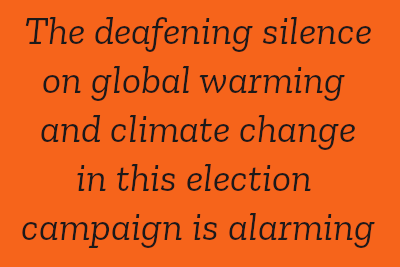 The deafening silence on global warming and climate change by the two major parties since the start of the election campaign is absolutely alarming. Most of the running on this most important issue is being made by the “teal” independents, some of whom are standing against sitting Liberal members in what now appear to be winnable House of Representative seats for independents in Wentworth, North Sydney, Kooyong, Goldstein, Mackellar, Curtin and possibly even Hume where the unpopular sitting member Angus Taylor is being opposed by a promising independent Penny Ackery. The seats currently held and likely to stay with sitting independents Zali Steggall in Warringah, Helen Haines in Indi, and Andrew Wilkie in Clark. There is also the very real prospect of David Pocock, primarily a climate candidate, winning one of the ACT senate seats.
The deafening silence on global warming and climate change by the two major parties since the start of the election campaign is absolutely alarming. Most of the running on this most important issue is being made by the “teal” independents, some of whom are standing against sitting Liberal members in what now appear to be winnable House of Representative seats for independents in Wentworth, North Sydney, Kooyong, Goldstein, Mackellar, Curtin and possibly even Hume where the unpopular sitting member Angus Taylor is being opposed by a promising independent Penny Ackery. The seats currently held and likely to stay with sitting independents Zali Steggall in Warringah, Helen Haines in Indi, and Andrew Wilkie in Clark. There is also the very real prospect of David Pocock, primarily a climate candidate, winning one of the ACT senate seats.
Morrison has shown several times that his word means nothing, and he does not convey any feeling of trust or confidence, which are not traits one would normally look for in a leader. On top of this some of Morrison’s closest lieutenants Taylor, Pitt and Joyce can’t be trusted to move against some of the mining heavyweights to do the right thing by the Australian people. The Labor Party, although mostly saying the right thing are conflicted with the interests of some of the unions who support Labor being heavily invested in coal mining. A solution for Labor would be to accelerate the development of alternative industries in coal mining areas.
Both the Coalition and Labor say they are opposed to minority governments relying on independents, or “hung parliaments” as they are inefficient and ineffective. Arguments against independents in parliament include lack of government funding for independent electorates and also that independents hinder the progress of legislation through the house, both of which are false! Funding for many electorates held by independents in the past was actually very favourable because governments needed the independents to get bills passed in many cases. And far from being a hindrance to passing legislation, the opposite is closer to the truth. In June 2013 Nick Evershed published the results of a survey he had conducted to ascertain which government was the most successful in passing legislation (based on acts passed per days in office). Surprisingly it was the Gillard government in top position with an average of 0.495 acts per day, followed by the Hawke, Fraser, Keating and Whitlam administrations. What makes it so interesting is that of those top five administrations, the only one with a ‘hung’ parliament relying on the two independents, Tony Windsor and Rob Oakeshott and Greens support was the Gillard government.
In conclusion, the best election outcome for those concerned about climate change would probably be a minority Labor government supported by three or four of the climate conscious independents in the House of Representatives as well as David Pocock in the Senate. This would ensure that Australia would at last be taking a responsible position on climate change showing that we are respectful and responsive to the needs of all the worlds’ people.
Essay by Robert Watson
Published 22nd April 2022
Contact: rocky@rockflat.com.au


